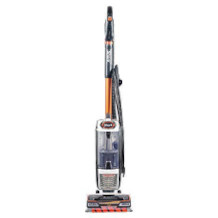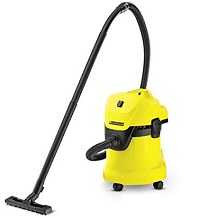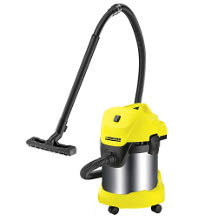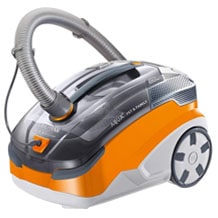Upright vacuum cleaner purchasing advice: how to choose the right product
- The most important facts in a nutshell
- Stick hoovers are handy, compact and easy-to-use lightweights.
- Thanks to their slim design, they can be stored in a space-saving way – perfect for small flats or holiday homes.
- The appliances are ideal for everyday family households.
- Stick vacuums usually work without a dust bag and in battery mode.
- Many models have good suction power and are equipped with practical features such as different suction levels or extra nozzles for carpets and upholstery.
Mobility makes the difference
Upright hoovers are particularly suitable for the quick and convenient removal of everyday mishaps: bread crumbs under the dining table, street dirt on the floorboards, dust threads on ceilings and walls or cat hair on the sofa. Upright hoovers are among the most flexible household appliances, as they can be used in many ways and are very manoeuvrable. In contrast to conventional hoovers, they can usually be used without a bag or cord and require little storage space because they are very compact. In addition, they can be used more flexibly and, depending on the model, are very powerful. All this makes upright hoovers practical devices that make housework easier.
A brief digression: the classic vacuum cleaner
No household can do without a hoover. Dirt and dust are found every day on the floor, in corners, on furniture and upholstery. That’s why many people still rely on classic hoovers. They consist of a so-called carriage and a suction tube. Since both the dust collection container including the bag and the motor are in the sled, they are usually heavy and inflexible. In addition, you have to pull the carriage behind you, which means that the devices lack manoeuvrability. The carriage quickly collides with furniture legs or door edges; unsightly scratches are the result. In addition, conventional hoovers usually take up a lot of space.
The invention of the hoover
In 1860, two US-Americans, Ives W. McGaffey and Daniel Hess, introduced the first developments of a hoover. However, it was Melville Bissell who received the patent for the first carpet hoover called Carpet Sweeper in 1876. The US-American James Murray Spangler patented the first portable hoover in 1907 and sold the patent to the Hoover company one year later. Hoover is still one of the best-known hoover manufacturers today.
How are stick hoovers constructed?
All components of upright hoovers – motor, fan, filter and dust container or bag – are integrated in the handle. With their elongated housing and slim design, they are reminiscent of a broom. That is why they are often called broom hoovers or upright hoovers. The upright hoover is operated from the hand piece. Since there is no external suction tube, the Vorwerk is mounted directly on the stick. The low weight, compact design and manoeuvrability make vacuuming easy and convenient. Some models are so light that they can even be operated with just one hand. Comfort is provided by a special handle mounted on the top of the stick. In addition to the technical aspects, stick hoovers also impress with their modern, elegant design.
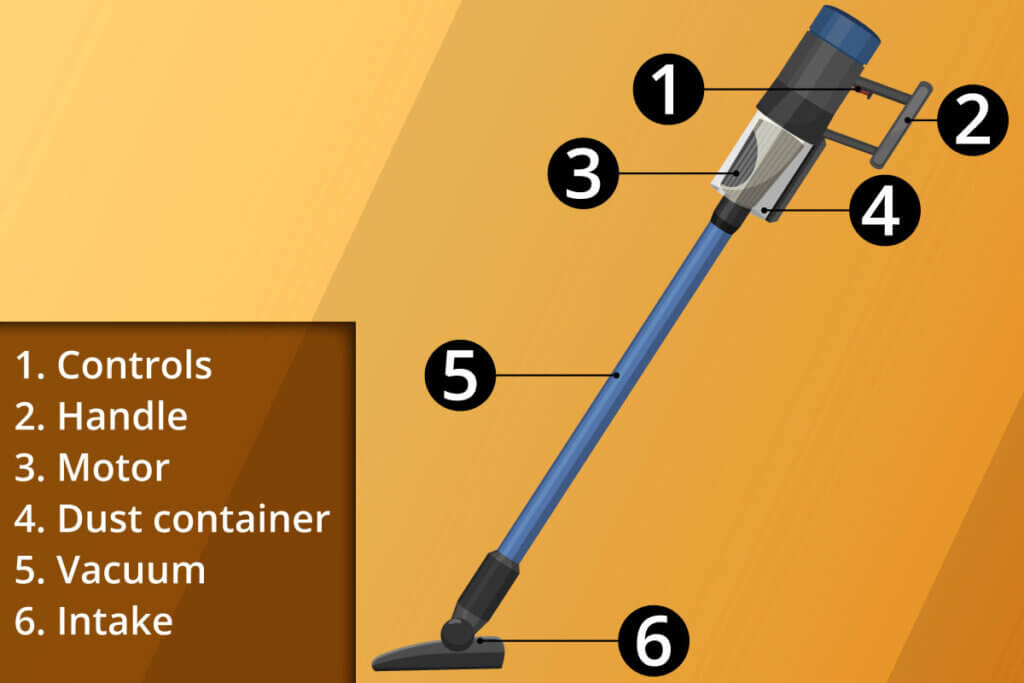
How do stick hoovers work?
The motor of the stick hoover is located in the handle. The drive creates an air flow that sucks in dust and dirt through the suction slot. This is then transported through the suction tube into the collection container. The dirt remains in the dust container, while the residual air escapes to the outside again, cooling the motor. Special filters trap the dust as well as the dirt and prevent it from escaping again. Some upright hoovers are even equipped with two filters for coarser and finer dirt. Since the power of the motor influences the suction power, there are also technically upgraded upright hoovers on the market that work with so-called cyclone technology: Here, the suction power does not diminish even when the container is full.
Finding the right model
Consider in advance on which surface you want to use the upright hoover and what the local conditions are like in your home. The design can be decisive in terms of handling and convenience when buying a stick hoover. There are combination and freestanding models, as well as units with integrated or replaceable bags and corded or battery operation.
Leading brands
Dyson |Philips | Miele | Hoover | AEG | Vorwerk | Bosch | Makita | Rowenta
Combination hoover
These combi vacuum cleaners are multifunctional because they have a decisive advantage: they can be easily transformed from a stick hoover into a hand hoover, which is why they are also called 2-in-1 appliances. This allows for an even larger action radius and the better you are positioned for your cleaning tasks. With crevice and furniture nozzles as well as mini brushes, you can easily remove dust, dirt and pet hair from all corners, niches and upholstery crevices. The combi devices are also perfect for the interior of the car, caravan or motorhome. Some models are equipped with a brush head that can be swivelled by 180 degrees, which makes vacuuming under cupboards, chests of drawers and furniture easier. However, the dust bins are usually smaller here.
Upright hoovers – freestanding or with a holder?
Free-standing upright hoovers do not need a holder to put them down and are therefore easy to handle. Even if you have something else to do while you are vacuuming, you can simply leave the hoover and resume the vacuuming process later. However, freestanding models usually have a larger Vorwerk, as this also serves as a stand; this design makes the devices less compact and heavier. Since the vacuum cleaner is wider than other models, its radius of use is limited, especially in corners and under furniture. Non-free-standing upright hoovers, on the other hand, are lighter and have a narrower front; this means they can be used in small niches. However, since the hoover cannot stand on its own, you must either lay it down or fix it in a separate holder.
Stick hoover with cord
Conventional hoovers require a power socket; some stick vacuum cleaner models are also corded and must be connected to the mains. Even though you can operate these devices permanently and do not have to pay attention to the battery life, the cable is not always an advantage: During floor cleaning, the cable is always in the way and, in the worst case, becomes a tripping hazard. Furthermore, you are always dependent on the proximity of a socket, which makes these hoovers less flexible; for example, cleaning cars, ceilings and walls is only possible to a limited extent.
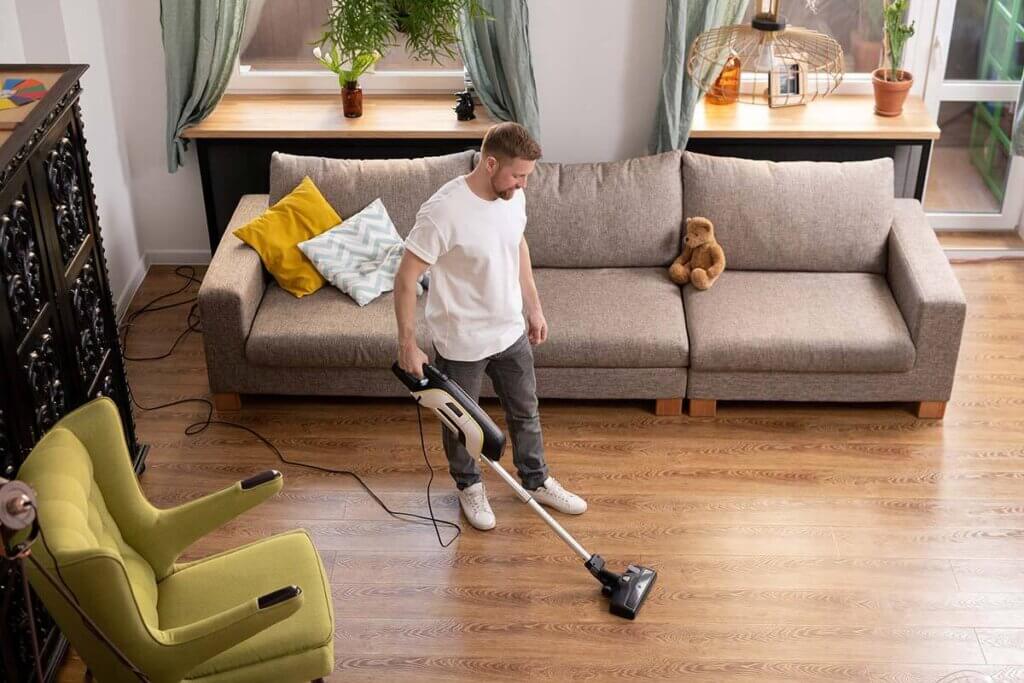
Stick hoover with battery
The battery-powered devices can be used more extensively and flexibly once the battery is fully charged. There is no need for a power socket and the risk of tripping is minimised because there is no cord. With some devices, the battery runtime is only 30 to 40 minutes. Higher-end models, on the other hand, offer a runtime of 60 minutes or more. Charging times also vary depending on the model: with inexpensive devices, it can take up to five hours until the hoover is ready for use again. However, many devices are fully charged in around one hour. Even though corded models are usually a little more powerful, cordless models have the clear advantage that they are flexible and can be used throughout the home without any problems.
Bagless stick hoovers
Bagless hoover models do not use conventional, replaceable dust bags. Dust, dirt and hair are collected in an integrated collection bin. Depending on the bagless model, these bins vary in size; thus, for a large floor area, a bagless device with a large dust bin is also recommended so that you do not have to empty it several times during the cleaning process. Since there are no bags that need to be replaced regularly, there are no follow-up costs.
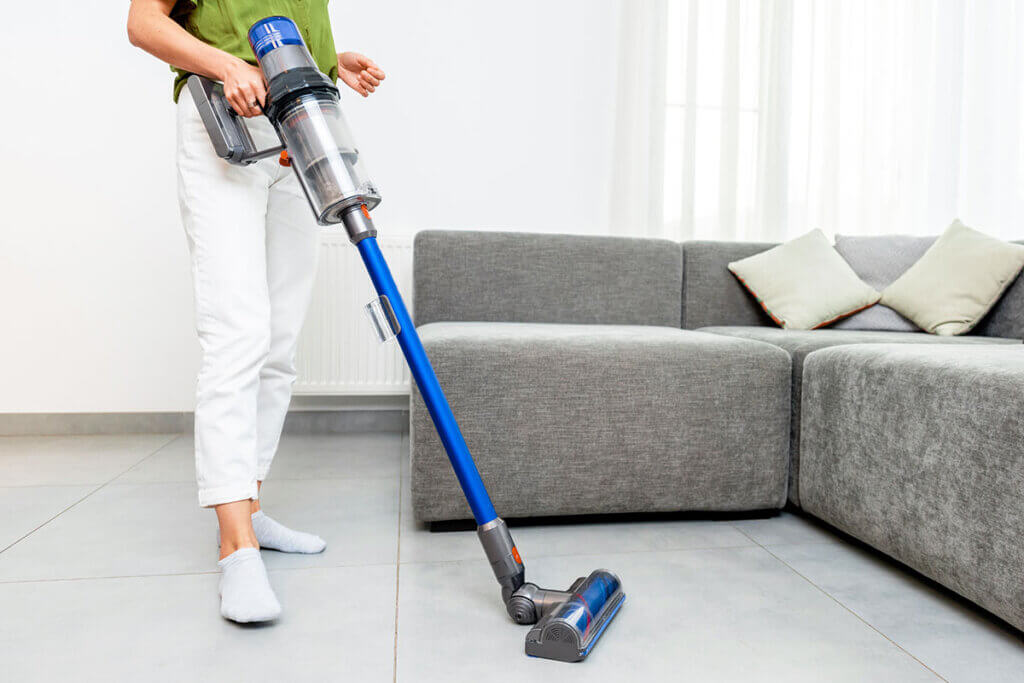
Upright hoover with bag
Hoovers with a bag are the classic variant and are also represented in the stick hoovers. When the dust bag is full, you can remove it and dispose of it directly. This is usually easier than emptying and cleaning the integrated container of bagless hoovers. For this reason, replacing the bag is more hygienic. However, the principle is less sustainable. In addition, there are follow-up costs for the bags. Washable bags are recommended because they avoid follow-up costs and are more environmentally friendly. The only additional expense is the regular washing of the bags.
Allergy sufferers beware!
House dust is not pleasant for anyone. But it causes problems for allergy sufferers in particular. For them, it is especially important to choose a stick hoover with a fine dust filter. Models without a filter may contain dust particles in the air coming out of the vacuum cleaner. A filter ensures that all fine dust remains in the device. In addition, models with a bag are more recommended for allergy sufferers, as bagless upright hoovers may have residual dust in the container. In addition, the dust is more easily dispersed in the air as soon as you empty the container.
What should I consider when buying a stick hoover?
The suction power, the battery life and features such as extra nozzles for upholstery or pet hair, replaceable containers or different suction levels are purchase criteria to consider. If you use the vacuum several times a week or even daily, devices with a short charging time are recommended. The power of the battery is also crucial with regard to the area to be cleaned so that you do not have to stop the cleaning process prematurely.
The filter system
In models with a cyclone filter, the air is cleaned in a first step and only then led to the outside via a fine dust filter. You can clean the filter with water. This system is especially recommended for allergy sufferers. Mostly, however, only older hoover models work with this principle; modern appliances have integrated fine dust filters: microfilters or HEPA filters, also called HEPA or high-performance particle filters. Microfilters filter very finely, but are permeable to coarser dust particles. HEPA filters even remove bacteria and pollen, which is why they are preferred by allergy sufferers.
Energy-saving use
The energy label originally introduced for hoovers has been abolished again. For this reason, it is not always obvious how energy-saving the individual appliances are. However, there are ways to vacuum in an energy-saving way: Switch off the appliance when you clean several rooms and change rooms. You should also switch off the vacuum during short breaks or when you are moving furniture to save electricity or the battery. The charging station of some battery-operated models has a function that automatically stops charging as soon as the device is fully charged.
The performance
In a one-room flat or holiday home, a hoover does not have to perform as well as in a family household with children and pets. Stick hoovers usually have a suction power of around 500 to 600 watts and are therefore comparable with conventional floor hoovers in this respect.
The adjustment options
To achieve a satisfactory cleaning result, you should make sure when buying that the upright hoover has different power levels for different degrees of soiling. Two to four suction levels are common. With some devices, the switch-on button must be pressed permanently during operation. Models with a latching mechanism are much easier to use.
The battery
If you choose a stick hoover with a rechargeable battery, the battery characteristics are partly responsible for the performance of the device. Lithium-ion batteries are recommended because they are more power-efficient and have a high performance. Furthermore, lithium-ion batteries are long-lasting and do not discharge themselves. Ideally, use lithium-ion batteries with at least 20 volts.
The equipment
When buying, consider which floor coverings you want to clean. Some machines are only suitable for carpets, rugs or tiles, others for parquet and laminate. If you want more comfort or more options, you should definitely pay attention to the additional features such as attachments or extra nozzles. Particularly upright hoovers that do not have an integrated hand-held hoover are limited from the outset, as they cannot be used for upholstery and cushions.
Ease of use
This aspect is made up of several factors. These include the size, the weight, the container volume, the noise level, the wall mount and the charging station in the case of cordless vacuum cleaners.
Container volume
When you buy a bagless upright hoover, the capacity of the container plays a major role. The capacity is usually just under one litre, in some cases it is less. This volume is usually sufficient to vacuum rooms several times.
Weight
If you also want to vacuum ceilings and walls or use the appliance throughout the house, a lower weight is recommended. The average weight is two to three kilograms. Wired devices, on the other hand, often weigh more than six kilograms.
Volume
Classic upright hoovers are often quieter than stick hoovers. However, depending on the brand, there are also quieter upright hoovers with a noise level of around 60 to 80 decibels, which makes them about as loud as a moving car. The hoover should not be louder than 80 decibels, as it can then be harmful to your hearing during prolonged use.
Features
Other extra features include LED lighting on the nozzle, which is particularly handy when vacuuming under furniture or in poorly lit corners. Here you will also benefit from a device with a swivel joint, as it can be used more flexibly. Charging stations for cordless vacuum cleaners are available either standing on the floor or as a wall mount.
For pet owners
Not all appliances are suitable for removing pet hair. However, some upright hoovers are equipped with special brushes especially for pet hair. In models that have an integrated hand-held hoover, this small device is suitable for removing pet hair. In some cases, the hand hoover is also included separately.
How do I clean a stick hoover?
Bagless models are more maintenance-intensive because you have to empty and clean the collection container regularly. Since hoovers come into contact with dirt, dust and possibly pet hair every time they are used, filters, nozzles and suction slots can easily become clogged. Particles that are supposed to end up in the bin come out more easily; this is a disadvantage especially for allergy sufferers. It may also shorten the life of the appliance. After each vacuuming operation, clear the suction slot of any remaining dirt. Bagless devices should also be emptied after each use, regardless of whether the container is full or not.

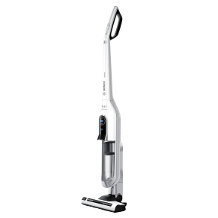
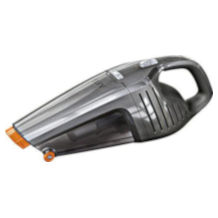
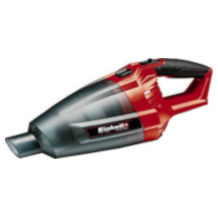
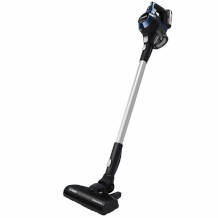
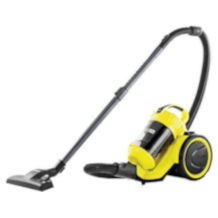
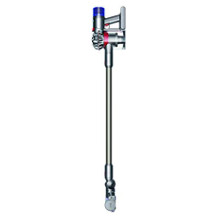
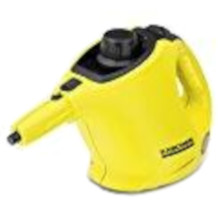
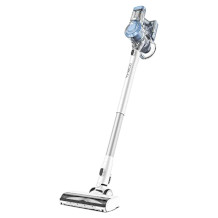
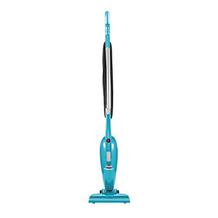
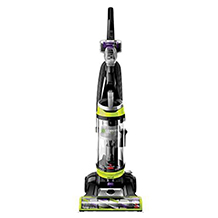
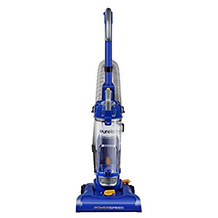
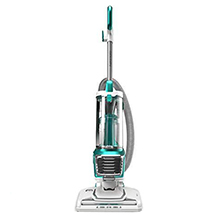
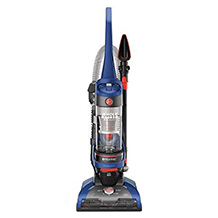

 108 reviews
108 reviews

